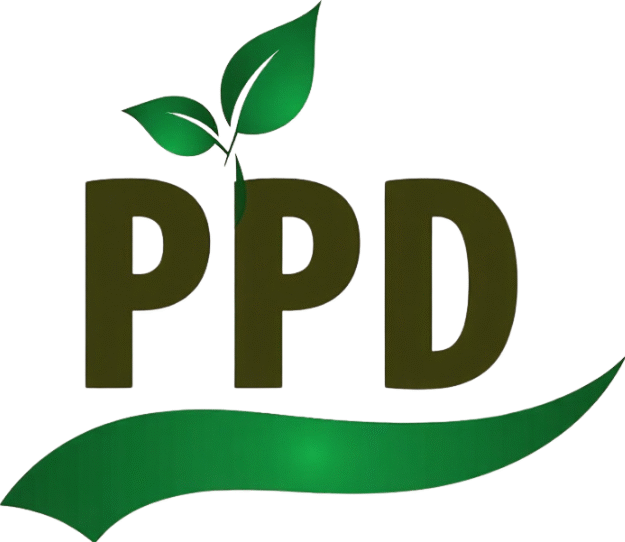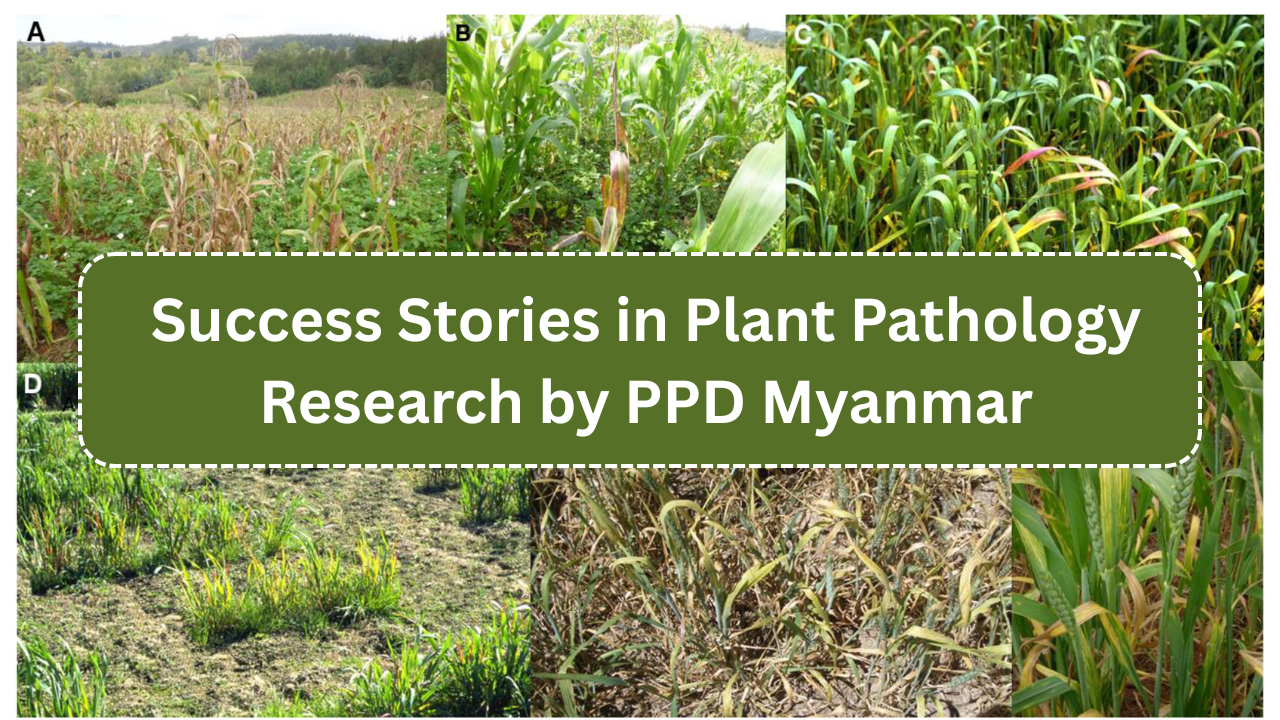
In the fight to protect Myanmar’s crops from devastating diseases, the Plant Protection Division (PPD) under the Ministry of Agriculture, Livestock and Irrigation (MOALI) has emerged as a critical force. Armed with scientific research, field diagnostics, and farmer-focused interventions, PPD’s plant pathology unit has not only managed disease outbreaks but has also elevated Myanmar’s agricultural resilience and productivity.
This article highlights some of the most notable success stories in plant pathology research by PPD Myanmar — showcasing how innovation, data, and collaboration are transforming the country’s approach to plant health.
The Role of Plant Pathology in Myanmar
Plant pathology, the study of plant diseases caused by pathogens and environmental conditions, is vital in Myanmar, where agriculture employs over 60% of the population. Key crops like rice, maize, pulses, vegetables, and fruits are regularly threatened by fungal, bacterial, and viral diseases. PPD’s dedicated pathology teams combine laboratory analysis, field trials, surveillance, and farmer training to detect, diagnose, and manage these threats.
Major Success Stories in Plant Pathology Research
1. Early Detection and Management of Rice Blast in Ayeyarwady Region
- Problem: Severe outbreaks of Magnaporthe oryzae (rice blast) were destroying thousands of hectares of rice.
- PPD Intervention: Introduced a regional disease surveillance system and field testing kits for early diagnosis.
- Research Outcome: Identified high-risk zones and promoted use of resistant rice varieties like Yezin 6.
- Impact: Disease incidence reduced by over 40% within two growing seasons.
2. Nationwide Survey and Control Strategy for Bacterial Wilt in Tomato
- Problem: Ralstonia solanacearum was causing wilt and death in tomato plants, especially in Shan State.
- PPD Action: Conducted molecular diagnostic testing and soil analysis to map hotspots.
- Intervention: Recommended crop rotation, raised-bed farming, and resistant seed lines.
- Impact: Yield losses reduced by 60% and farmer adoption of new techniques increased significantly.
3. Successful Biological Control of Powdery Mildew in Pulses
- Problem: Powdery mildew was a chronic issue in green gram and black gram crops, reducing export quality.
- PPD Research: Trialed the use of Ampelomyces quisqualis, a fungal biocontrol agent.
- Result: Field trials in Magway showed 70% disease suppression without chemical fungicides.
- Outcome: Biocontrol adopted as part of organic farming promotion in pulse-exporting zones.
4. Rapid Response to Banana Fusarium Wilt TR4
- Problem: A sudden outbreak of Fusarium oxysporum f. sp. cubense Tropical Race 4 in banana plantations.
- PPD Measures: Coordinated with regional plant clinics to confirm pathogen presence.
- Action Plan: Imposed containment zones, promoted disease-free planting materials, and improved drainage.
- Impact: Spread limited to three districts, protecting key export-oriented banana zones in Kachin.
5. Development of Diagnostic Manuals and Mobile Labs
- Challenge: Limited access to plant disease diagnostics in rural areas.
- Innovation: PPD developed laminated diagnostic charts and launched mobile pathology labs.
- Function: Provided real-time identification of pathogens in rice, maize, and vegetables.
- Result: Faster disease management decisions and improved extension worker capacity.
Overview Table: Key Plant Pathology Achievements by PPD Myanmar
| Research Focus | Crop Affected | Region | Result Achieved | Year | Partners Involved |
|---|---|---|---|---|---|
| Rice Blast Early Detection | Rice | Ayeyarwady | 40% reduction in blast incidence | 2021–2023 | YAU, IRRI |
| Bacterial Wilt Survey & Management | Tomato | Shan State | Yield loss reduced by 60% | 2020–2022 | PPD, FAO |
| Powdery Mildew Biocontrol | Pulses | Magway | 70% disease control with fungi | 2019–2021 | MOALI, Private Labs |
| Fusarium Wilt Containment | Banana | Kachin | Spread limited to 3 districts | 2022 | Local DOA offices, NPPO |
| Mobile Diagnostic Lab Initiative | Rice, maize, veg | Nationwide | Real-time field diagnosis enabled | 2023 | PPD, Japan-ASEAN Cooperation |
Why These Successes Matter
- Stronger Export Potential
By controlling crop diseases, Myanmar meets international standards for phytosanitary safety and improves competitiveness in global markets. - Cost Savings for Farmers
Integrated management and biocontrol methods reduce dependency on expensive chemical pesticides. - Enhanced Food Security
Higher yields and healthier crops directly contribute to national nutrition and economic stability. - Local Capacity Building
Training of farmers and extension agents ensures that solutions are adopted and maintained at the grassroots level.
Support Systems That Made It Possible
- Collaboration with Universities: Yezin Agricultural University and regional colleges provided lab support and postgraduate researchers.
- International Agencies: Support from FAO, IRRI, and JICA played a key role in technical training and equipment provision.
- Farmer Field Schools (FFS): PPD used FFS models to demonstrate disease identification and treatment on real farms.
- Use of Digital Tools: Mobile pest and disease alert systems were piloted in Chin and Mandalay regions.
Challenges Still Ahead
Despite these notable successes, PPD continues to face systemic challenges:
- Limited Funding: Research labs and diagnostic facilities require consistent investment.
- Climate Variability: New and emerging pathogens are becoming more unpredictable.
- Rural Access Gaps: Remote farmers still struggle to access timely diagnostic and treatment services.
- Quality Control for Biopesticides: Weak regulatory frameworks affect the consistency of biocontrol product efficacy.
Recommendations for the Future
- Expand Disease Forecasting Tools: Develop digital dashboards based on weather and crop data.
- Establish Regional Plant Health Clinics: Offer localized support in high-risk zones.
- Strengthen Biopesticide Regulation: Ensure quality and safety of bio-based plant disease treatments.
- Encourage Farmer-Led Research Trials: Co-create solutions with farmers to increase adoption.
- Link Research with Policy: Ensure outcomes inform national plant health and export strategies.
Three One-Line FAQs
Q1: What is the Plant Protection Division’s role in Myanmar?
PPD leads national efforts in diagnosing, managing, and researching crop diseases to protect agricultural productivity.
Q2: How has PPD improved rice disease control?
Through early warning systems, resistant variety promotion, and regional surveillance in high-risk areas.
Q3: What innovations has PPD introduced for farmers?
Mobile diagnostic labs, field-based training, biocontrol research, and farmer-friendly disease manuals.

